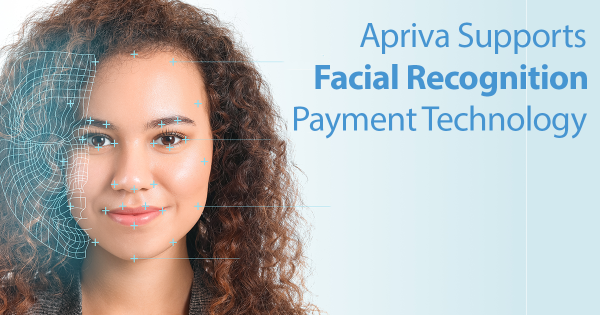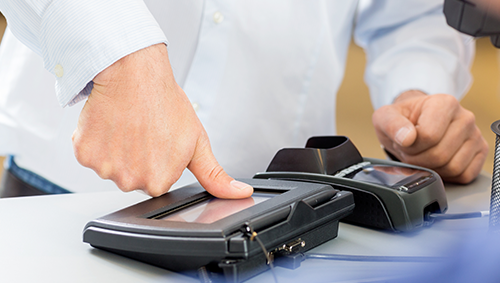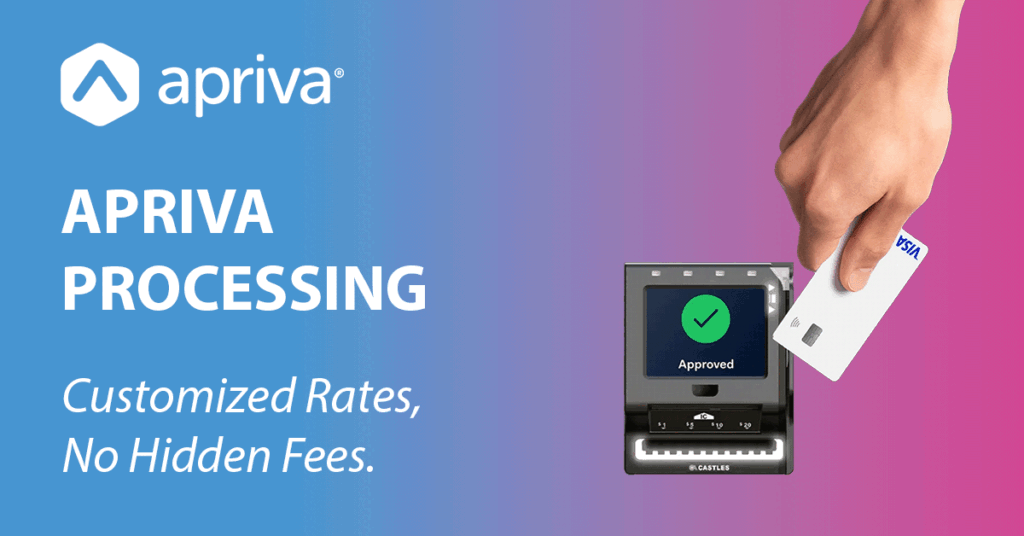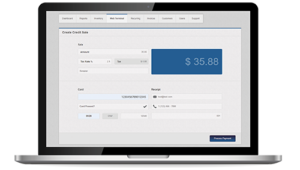Apriva Supports Biometric Payments Including Facial Recognition

While experimentation with biometric payments, such as fingerprints, has been around the mid-2000’s, methods like facial recognition are a more recent development. Apriva’s ability to use true tokenization for card not present payments means we can support those payments when they are associated with facial recognition and other biometric technologies.
What Are Biometric Payments?
Biometric payments refer to a payment method that utilizes biometric technology to authenticate and authorize transactions. Instead of using traditional payment methods like cash, credit cards, or PINs, biometric payments rely on unique biological characteristics of an individual, such as fingerprints, facial recognition, iris scans, voice recognition, or even vein patterns, to verify their identity.
Here’s how biometric payments generally work:
- Enrollment: Users need to enroll their biometric information in a secure system. This usually involves capturing their biometric data, such as fingerprints or facial features, and linking it to their financial account.
- Authentication: When making a payment, the user’s biometric data is captured and compared against the stored information to confirm their identity. This process typically happens in real-time and requires specialized biometric scanners or sensors.
- Authorization: Once the user’s identity is verified, the payment is authorized and processed. The necessary funds are deducted from the user’s linked financial account or charged to a registered credit card.
The History of Biometric Payments
The concept of using biometrics for payment purposes has been in development and implementation for over a decade. However, the widespread adoption and availability of biometric payment systems have gained significant traction more recently.
The use of biometrics in payments began to emerge in the mid-2000s, with initial implementations focusing on fingerprint-based systems. For example, in 2006, a Japanese company introduced a biometric payment system that allowed customers to link their fingerprints to their credit card accounts for making purchases.
Since then, biometric payment technology has evolved and expanded to include other modalities such as facial recognition, iris scans, voice recognition, and even vein patterns, as mentioned above. Biometric payments have been deployed in various contexts, including retail environments, banking, mobile payments, and e-commerce.
Over the past few years, advancements in technology, increased security concerns, and the growing demand for convenient and secure payment methods have driven the expansion and adoption of biometric payment systems. Companies, financial institutions, and technology providers have been investing in research and development to improve the accuracy, efficiency, and accessibility of biometric payment solutions.
While biometric payments have made significant progress in recent years, it’s important to note that their widespread adoption and availability may vary across countries and regions. Regulations, infrastructure, and market dynamics influence the pace of adoption and implementation of biometric payment systems.

The Benefits of Offering Biometric Payment Acceptance
The benefits of biometric payments include enhanced security, convenience, speed and efficiency, and accessibility.
- Enhanced Security: Biometric data is unique to each individual, making it difficult to forge or replicate. This reduces the risk of identity theft or fraud compared to traditional payment methods that rely on passwords or PINs.
- Convenience: Biometric payments eliminate the need for carrying physical cards or remembering complex passwords. Users only need their biometric feature, which is typically always available.
- Speed and Efficiency: Biometric authentication can be faster than traditional methods, resulting in quicker transactions, shorter queues, and improved customer experience.
- Accessibility: Biometric payments can be particularly useful for individuals with disabilities who may have difficulty using traditional payment methods.
While biometric payments have gained popularity and are being adopted by various financial institutions and technology companies, there are still some challenges to consider, such as infrastructure to support wide adoption, privacy and data security (ensuring true tokenization is being utilized), accuracy and reliability due to aging, injuries, disabilities, etc…and standardization.
Overall, biometric payments offer a promising alternative to traditional payment methods, providing enhanced security, convenience, and efficiency. As technology continues to advance and adoption increases, we can expect to see further developments and improvements in this field.
Let’s Talk About Facial Recognition
Facial recognition for tokenized card not present payments is a more recent development compared to other forms of biometric payments. While facial recognition technology has been under development for several years, its application specifically in tokenized card not present payments is a relatively new trend. Apriva already supports this technology in live environments.
Tokenized card not present payments refer to transactions where the actual card details are replaced with a token to enhance security in online or remote payment scenarios. Apriva can and has integrated facial recognition technology solutions with our card on file tokenization which provides an additional layer of authentication and security.
The combination of facial recognition and tokenized payments has gained prominence in recent years due to advancements in computer vision algorithms, increased processing power of devices, and the growing acceptance of biometric authentication methods.
This approach allows users to make payments for online purchases by capturing a facial image or video using their device’s camera. The facial recognition system analyzes the captured data, creates a facial template, and matches it with the enrolled templates stored securely on the payment system’s servers. Once the match is successful, the payment transaction is authorized using the associated token.
By using facial recognition in tokenized card not present payments, the aim is to provide a convenient, secure, and frictionless payment experience for users. It adds an extra layer of security by leveraging the uniqueness of facial features while eliminating the need for manual input of card details or passwords.
While facial recognition for tokenized card not present payments is a relatively new development, it has gained momentum as more organizations and payment service providers have started integrating this technology into their platforms. However, it’s important to note that its adoption and availability may still vary across different regions and payment ecosystems.
Give us a chance to show you the Apriva difference today. Contact Apriva today for more information!



